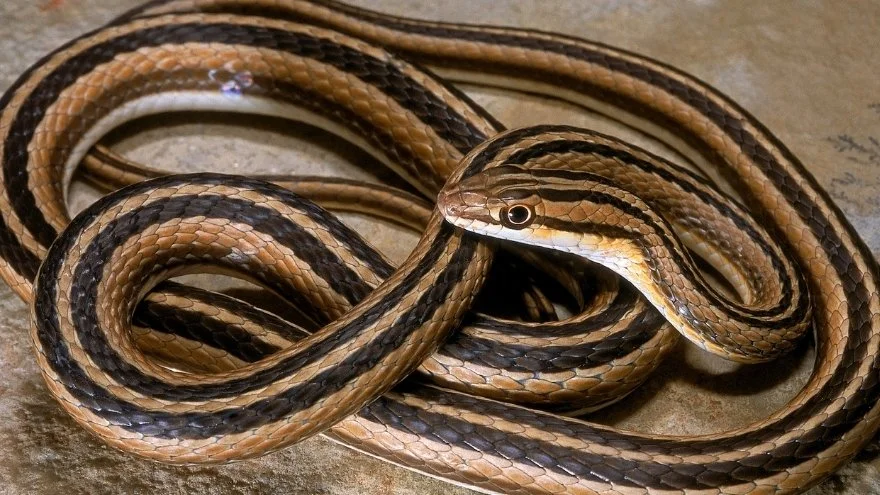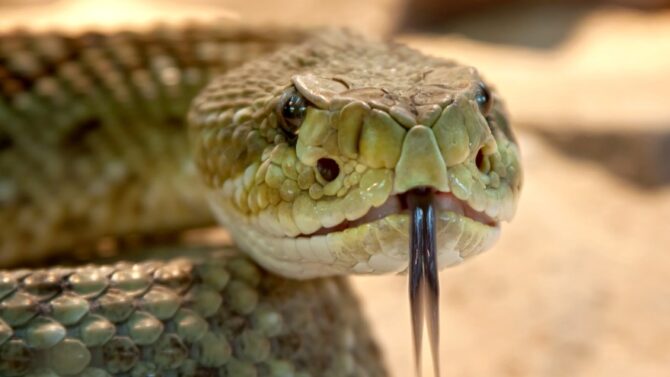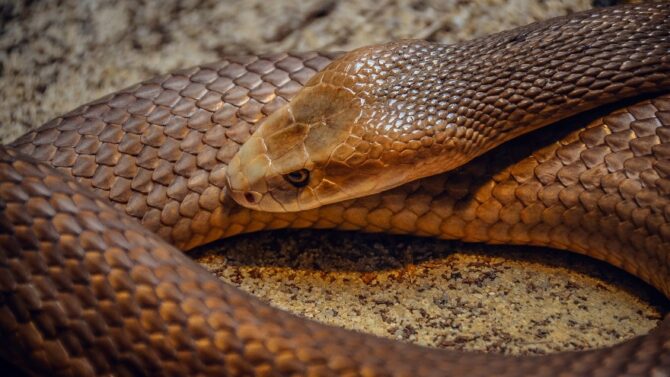Do snakes have legs, or did they evolve to become limbless animals?
Tales and legends have it that snakes were forced out of their limbs to slither until the end of time.
The skeletal system of some snake species also supports the idea behind these legends.
Therefore, we would not criticize some very educated persons who may be prompted to believe such stories.
Contrastingly, most people have seen none of the three thousand species of this elongated reptile with legs and are right to keep their stance that snakes are limbless.
If the subject of snakes having legs still lingers in your mind, this article will clear your doubts about snakes having legs. You’ll also learn about legless reptiles that resemble snakes.
Do Snakes Have Legs?

There are about three thousand snake species worldwide, including boas, pythons, pipe and shield-tailed snakes, blind and thread snakes, and pit vipers.
The short answer is that snakes have no legs. Very few features universally classify reptiles as snakes, including no limbs, wings, external ears, eyelids, vocal cords, with long body structures.
Biologists classify animals with the features highlighted above within the suborder Serpentes.
Vestigial Legs: Do Pythons and Boas Have Legs?

While it is true that snakes do not have legs, there is every indication that they used to have legs millions of years ago.
Pythons and boas are large species that reveal that snakes used to have legs, as they are among the earliest species.
Their vestigial legs feature two small hind leg bones buried in the muscles where their tails begin.
In all but name, the “molecular machinery” for leg development remains in pythons and boas via a Sonic hedgehog (SHH) gene.
The gene is responsible for developing limbs and other organs in limbed vertebrates.
However, the gene operates no longer than 24 hours in python and boa embryos resulting in a development that explains why pythons and boas have spikes that aid mating and tree climbing.
Sadly, the SHH gene is almost undetectable in other species of snakes.
How Many Years Ago Did Snakes Lose Their Legs?
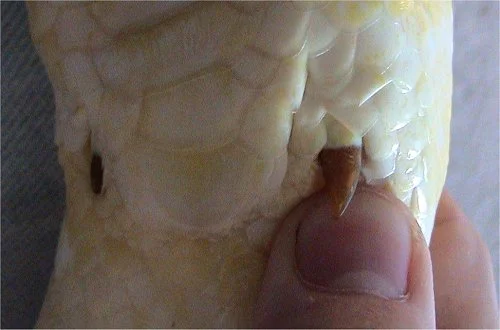
As indicated by basal species like python and boas, snakes’ leglessness is a product of evolutionary modification.
Nevertheless, not even the world’s oldest person witnessed the era when these slithering reptiles had limbs.
These vestigial legs unique to boas and pythons are evolutionary remains that reveal snakes had legs about 150 million years ago.
Fossil records help scientists create these estimates, revealing that snakes had legs during their first 70 million years of existence.[1]
The Najash rionegrina, discovered in 2003, was the first example of a terrestrial snake with noticeable hind legs.[2]
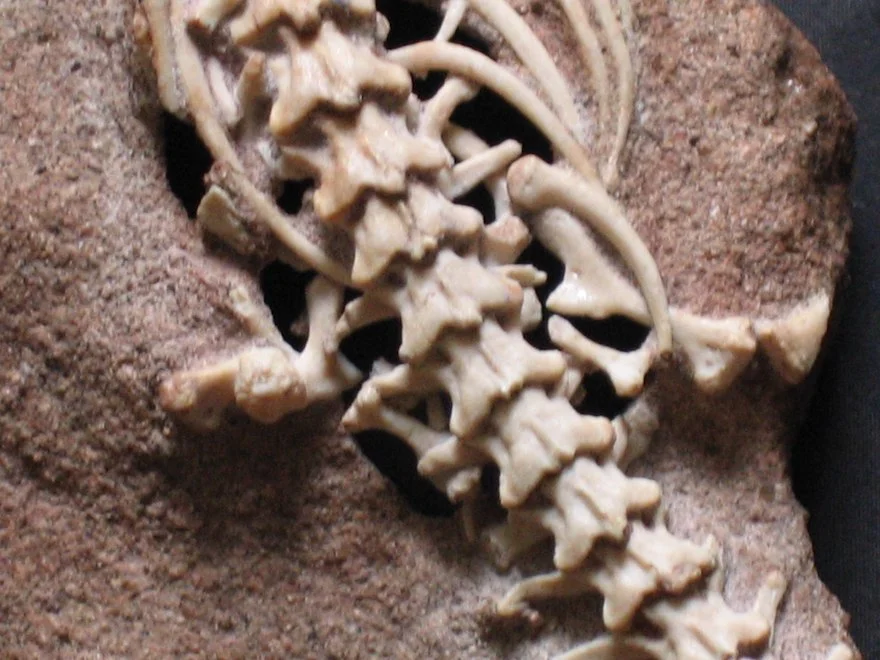
Why Don’t Snakes Have Legs?
Like humans who evolved walking on two legs while their successors walked on four, snakes developed slithering as a way to move, evolving slowly and growing out of their legs.
Their ancestral successors, lizards, continued to depend on their legs, moving with their limbs, while snakes depend on their abdominal muscles for grip and movement.
Related: Do Snakes Have Necks Or Are They Just A Tail?
What Other Limbless Reptiles Look Like Snakes?
Like snakes, some lizard species are limbless.
This newfound fact might surprise you, but some lizards do not have legs and are not snakes as they lack other essential snake-like traits.
Remarkably, these legless lizard species run into hundreds, but we can discuss some.
Flap-footed Lizards
As the name implies, these lizard species have tiny, flap-like hind limbs.
However, these hind legs are so small that they are hardly noticeable, similar to a python’s or boa’s vestigial legs.
You would not find these lizards everywhere as they are exclusive to Australia and southern New Guinea.
These lizards are not usually big compared to boas and pythons, reaching eleven inches.
Nevertheless, they are carnivorous, preying on other lizards with the ability to swallow them whole.
Glass Lizards
Like most snake species, some lizards look completely legless or have tiny vestigial legs.
Nevertheless, their moveable eyelids, visible external ears, and non-expandable jaws differentiate them from snakes.
Glass lizards are named after their glass-like tails that easily break off.
They are longer than the flat-footed lizards, reaching eighteen to forty-three inches, but they are usually slender and closely resembling many snake species.[3]
Slow Worms
Before further ado, we must note that the name of this species is a misnomer.
While you may believe they are worms due to their name or snakes due to their limbless appearance, they are legless lizards that inhabit grasslands.
Slow worms may live up to twenty years in the wild and grow between seven and twenty inches.
However, their most remarkable feature is their elongated body form and absence of external limbs and girdles.
You are most likely to find this lizard species in the United Kingdom, but you can easily identify them with their ear openings and eyelids.[4]
Frequently Asked Questions (FAQs)
What animals look like snakes but have no legs?
Snakes are not the only reptiles without limbs. Some lizard species are notorious for their close resemblance to snakes, thanks to their legless and elongated body unique to snakes.
Glass lizards, flap-footed lizards, and slow worms are some examples of lizards that look like snakes but have no legs.
What animal looks like a snake with legs?
You may stumble into a reptile that looks like a snake but has legs. It is not a genetic mutation but another reptile called skink (Scincidae).
Most skinks have well-developed short legs, but you might also find some with no legs.
Are lizards snakes with legs?
While you may be tempted to think that lizards are limbed snakes, other traits differentiate both reptiles.
Lizards have moveable eyelids, visible external ears, and non-expandable jaws, opposite features in most snake species.
Can you outrun a snake?
Snakes do not have limbs, but they are as fast or even faster than some animals with legs.
The fastest snake, the black mamba, can slither fast, reaching speeds of 12 mph. However, even a can exceed that speed.
Wrap Up
Legends and stories about snakes being forced out of their legs for mythical reasons are untrue.
Snakes used to have legs millions of years ago and evolved out of them after devising another way to move.
However, modern snakes do not have legs, except pythons and boas with spurs that aid mating and tree climbing.
